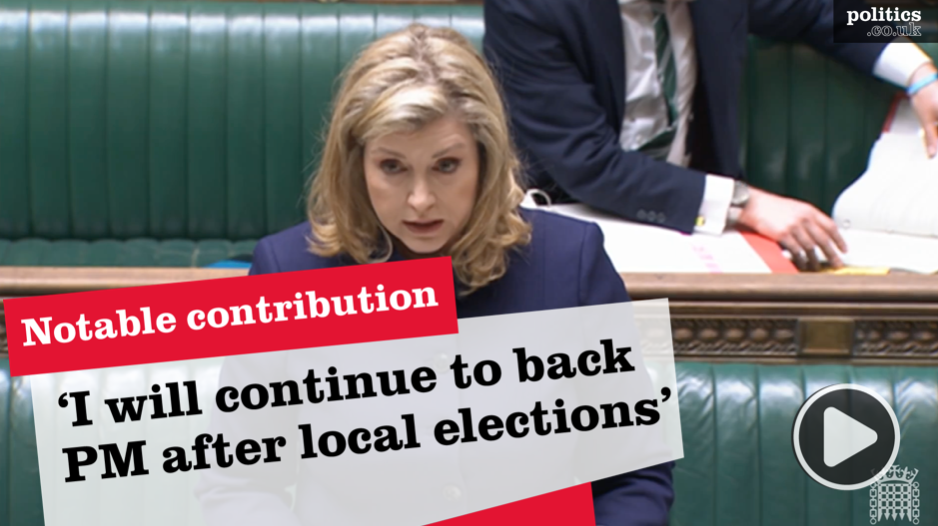What is fostering?
Fostering conveys the temporary acquisition of guardianship rights relating to a child.
This often occurs when a child is awaiting return to their birth parents, awaiting adoption, or when courts are considering an adoption order.
The duration of foster care ranges from one night to several years.
Some foster carers provide care for children in emergency situations before long-term arrangements have been finalised; others support a foster child for the duration of their childhood, from a young age until they reach adulthood.


Regular foster parents – those who provide care for multiple children on an ongoing basis – will often specialise in a particular age group, be that toddlers and young children, primary school aged children, or teenagers. A single carer can look after up to three children at once, with the exception of when birth siblings form a bigger group.

In 2019, foster carers were looking after 56,000 children in England.
When foster parents already have their own children, fostering agencies offer advice and guidance on the number and age of foster children to support.
Fostering essentially entails caring for a child as if he or she is part of the family, meaning that an approved foster carer must be willing and able to support a child on a full-time basis. On a practical level, foster parents must be at least 21 years of age and be a UK resident (or be able to remain in the UK indefinitely).
Before being able to foster, prospective foster parents must pass a short test to assess their ability to care for a child. Foster carers do not need to own their own home, but must be able to provide a spare bedroom for the child.
Foster parents assume a number of responsibilities to ensure the child’s wellbeing both at home and within the local community. Parents must keep records and write regular reports about the child’s progress, guarantee the child’s access to relevant services such as education and healthcare, and complete training and support programmes developed by the Department of Education for all foster carers.
Where possible and appropriate, foster parents are encouraged to maintain links with the child’s birth parents and family.
In March 2019, 56,160 children in the UK were living with foster families. This represented 72% of the 78,150 children in care who are looked after away from home. The remaining 28% live with family members in a private fostering arrangement, are placed in children’s homes, are placed for adoption, or live independently alone or in residential employment.
The foster care system in the UK
Fostering agencies can either be local authority-run or independent (private), and there has traditionally been competition between agencies to recruit foster carers.
In July 2017, local authorities placed around 66% of foster children in placements they had managed directly, while 34% were assigned placements through Independent Fostering Agencies (IFAs).
Concerns have been raised in some quarters that the quality of care received from Independent Fostering Agencies is lower than that provided by local authority-led agencies. Nonetheless ,the Department of Education, has noted that 90% of Independent Fostering Agencies were rated good or outstanding in reports by the regulator, Ofsted.
Independent Fostering Agencies were more likely to work with larger households on average, with 39% approved for more than three foster children. They were also likely to have a greater range of foster carers from black or minority ethnic backgrounds.
Policy issues surrounding fostering
Issues of Race and Religion
When taking into account differences in language, religion, race, and culture, matching a child with a suitable foster parent can be a challenging task.
Under the Children Act 1989, children may be placed with a carer who does not share their culture, religion, or native language, provided that the carer is able to guarantee all needs of the child.
Likewise, as of 2014, foster agencies are no longer required to ensure an ethnic match between carers and children. This flexibility has been preserved to prevent capable foster families from being ‘written-off’ on the grounds of arbitrary check-box criteria.
Foster carers from ethnic or religious backgrounds have been underrepresented in the national fostering network. According to figures published by the House of Commons Library, in July 2017, 90% of local authority carers were white, compared to 79% of foster children. This meant that some 10% of foster children from ethnic minority backgrounds were assigned carers from a different cultural perspective.
Given that all prospective carers are fully assessed beforehand, pairings of this sort can often not pose problems. However, there remains a strong consensus that a child’s transition into foster care is made significantly more traumatic with the addition of cultural barriers.
Local Shortages
During the last twenty years there have been concerns about the levels of foster carers.
In December 2007, the House of Commons Education Select Committee presented the case for recruiting an additional 7,600 foster families, so as to be able to assign foster children the “best and most appropriate foster carer”. The Committee also argued for greater recruitment of foster families in areas of the country where carers were needed.
Similar observations were made in the 2018 independent review of ‘Foster Care in England’ which noted that, despite there being sufficient foster carers on a national level, shortages were occurring at a local level due to an uneven distribution of carers across the country.
Despite acknowledging that most children are assigned a carer relatively quickly, the review continued:
“We do, however, have geographical shortages and a shortage of the right sort of placement for children who have a range of special needs that will require particular skills and knowledge from a foster carer. Typically, these children are older, part of a sibling group, or have a disability. This results in some children being placed with the foster carers on a temporary basis and subsequently needing to be moved to another, more suitable foster home, sometimes more than once.”
Support for foster carers
Foster agencies and carers have invariably called for improved support networks among carers.
In response to growing concern, the Department of Education launched the Children’s Social Care and Innovation Programme (CSCIP) in 2014 to test and share the most effective ways of supporting vulnerable children requiring support from social care services.
By 2020, the programme had supported 98 local projects through £200 million of investment. A subsidiary programme – Supporting Families: Investing in Practice – has likewise provided £17 million to permit 45 local authorities to pursue family-strengthening projects, including the Mockingbird family model. This project brings together grounds of between 6 and 10 ‘satellite’ foster homes to form a larger ‘constellation’ network.
In terms of financial support, the government provides a weekly fostering allowance for all foster carers in England. From 2017-2018, the assigned allowances were as follows:
| Babies | Pre- primary | Primary | 11 to 15 | 16 to 17 | |
| London | £144 | £147 | £165 | £187 | £219 |
| South East | £138 | £142 | £158 | £179 | £211 |
| Rest of England | £125 | £128 | £141 | £161 | £188 |
Foster carers also receive a fixed tax exemption of up to £10 000, in addition to tax relief of £200 – £250 per child per week.
According to The Fostering Network’s 2017 ‘State of the Nation’s Foster Care’ report, however, just 42% of foster carers feel that their allowances cover the high costs of providing quality foster care.
The role of the Private Sector
The 2010s have seen a rise in public concern over the profitability of independent fostering agencies.
In 2016, president of the Association of Directors of Children’s Services noted that independent agencies were offering sums of up to £3,000 to carers willing to transfer from local to independent agencies. It was suggested that some of these might then be ‘sold back’ to local councils at an inflated rate, raising questions about the operation of financial incentives in the foster care system.
Local authorities have likewise warned that independent fostering agencies generally attract carers from more affluent backgrounds while charging local authorities disproportionately high rates to use their services.
Legal framework around fostering
The core principle of fostering – providing temporary care for vulnerable children – has long existed.
In the United Kingdom, however, fostering would not become a legally upheld practice until 1926, under the Adoption of Children Act.
In the early days of fostering, the focus lay on providing short-term relief for unmarried mothers and to satisfy the needs of those couples unable to conceive themselves. Since this time, however, the focus of the law has shifted to the interests and welfare of the child.
Today, most of the law concerning the safeguarding of looked after children and the approval of foster carers is contained in the Children Act 1989. The Act sets out the functions and responsibilities of local authorities and independent fostering agencies in relation to looked after children.
The Care Standards Act 2000 articulates the regulatory regimes required of foster carers, while establishing a set of National Minimum Standards to be respected at all times.
The Children Act 2004 was introduced to ensure that local authorities promote the educational attainment of looked after children, and introduced a series of safeguarding provisions including the children’s commissioner, Local Safeguarding Boards, directors of children’s services, and minimum fostering allowances.
Some four years later, the Act would be accompanied by the Children and Young Person’s Act 2008, which amended the Children Act of 1989 and strengthens visiting requirements to children in foster care. Methods of reviewing foster services were formally preserved and expanded under the Independent Review of Determinations (Adoption and Fostering) Regulations 2009.
The Fostering Services Regulations 2011 establishes a clear framework of how foster care services should be delivered, how they should be assessed, and what forms of support a foster carer is entitled to. These regulations are consulted by OFSTED when inspecting fostering service providers.
Most recently, the Care Planning and Fostering (Miscellaneous Amendments) (England) Regulations 2015 introduced a legal definition of long-term foster placement, and clarified the conditions under which the arrangement can be carried forward.
In addition to those of direct relevance to national foster care services, there are several pieces of legislation and government guidelines which also apply to fostering and adoption procedures. In particular, human rights legislation and the Convention on the Rights of the Child 1989 are important to any fostering proceedings.
Statistics
On 31 March 2019, there were 78,150 looked after children in England.56,270 (72%) of these children were in foster placements – an increase from 55,200 in 2018.
Most fostered children (63%) were looked after due to ‘abuse or neglect’, while 14% were in care because of ‘family dysfunction’. A further 15% were in care due to there being ‘no parents available to provide for the child’, a ‘child or parent’s disability or illness’, and ‘low income or socially unacceptable behaviour’.
In total, 9,740 applications to become a foster carer were submitted from 1st April 2018 to 31st March 2019. This was a decrease of almost 1,000 compared to the previous year.
[Source – Family Care, 2020]
Quotes
We want every child in the country, whatever their background, whatever their age, whatever their ethnicity or gender, to have the opportunity to fulfil their potential. Children’s social care services have an essential role to play – whether by keeping children safe from harm, finding the best possible care when children cannot live at home, or creating the conditions that enable children to thrive and achieve. (Department for Education, Children’s Social Care Reform, 2016)


























